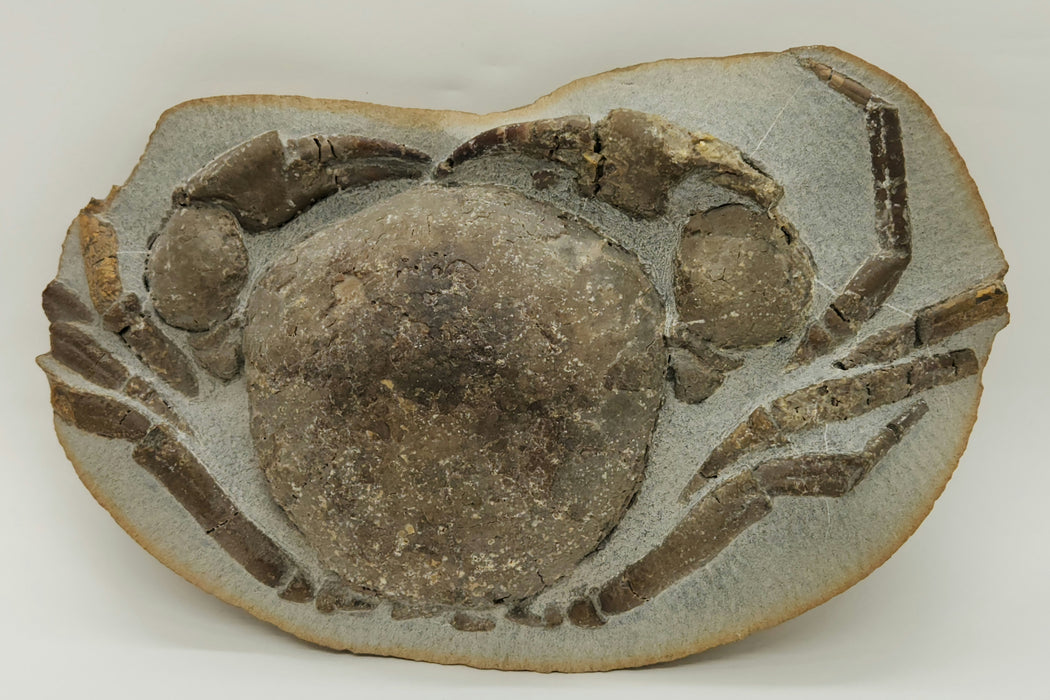
Fossil Crab | Tumidocarcinus giganteus | New Zealand
Tumidocarcinus giganteus
Miocene (23 - 5.3 MYO)
Glenafric Beach
North Canterbury, New Zealand
Specimen approx. size: 8.5" x 5" x 2.5"
Carapace approx. size: 3.75" x 3.5"
Tumidocarcinus giganteus is known from the early to middle Miocene strata of New Zealand. The fossils are primarily found in shallow marine sedimentary deposits, indicating a coastal or nearshore habitat with relatively warm, temperate conditions.
T. giganteus is one of the largest known members of the Tumidocarcinidae family. It is notable for its robust, highly vaulted carapace and well-developed claws (chelae). Key features include:
-
Carapace: Oval to subcircular in outline, strongly domed dorsally. The dorsal surface is coarsely granular or tuberculate, with well-defined regions.
-
Size: Some specimens reach carapace widths in excess of 15 cm, making it a particularly large fossil crab for the Miocene of New Zealand.
-
Walking Legs: Moderately long, flattened segments, adapted for a benthic lifestyle rather than active swimming.
T. giganteus likely inhabited shallow marine environments with soft substrates, such as sandy or muddy bottoms. Its size and claw morphology suggest it may have been a predator or scavenger, capable of crushing mollusk shells or other hard-shelled prey. The domed carapace indicates it may have burrowed or partially buried itself in sediment for protection or ambush.
Specimens are typically preserved as partial to complete carapaces, occasionally with chelae and other appendages. Fossils are commonly found in calcareous concretions or fine-grained marine sediments that promoted three-dimensional preservation. Some specimens show excellent detail, including surface granulation and muscle attachment scars.





